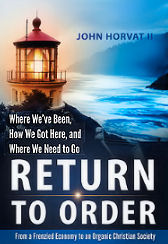[T]he feudal bond was a flexible bond especially in times of crisis. It arose during a period of chaos and barbarian invasions before the ninth and tenth centuries when families and individuals were overwhelmed by the nearly insurmountable obstacles of surviving amidst the disorder. We might liken the emergence of the feudal bond to the case of a shipwreck. The survivors can no longer function as isolated individuals or families but must forge new relationships to survive.
Born of necessity, desperation, and improvisation, this bond of mutual dependency suddenly emerged, providing stability, leadership, and direction. It was a tremendously creative bond that got things done quickly and found unimaginable practical solutions on a local level in an age of decaying central authority, social unrest, and economic stagnation. “Feudal government . . . was flexible and adaptable,” writes Joseph Strayer, “and under favorable conditions it generated new institutions with surprising rapidity.”(1)
(1) Joseph R. Strayer, Western Europe in the Middle Ages: A Short History (New York: Appleton-Century-Crofts, 1955), 75.
John Horvat II, Return to Order: From a Frenzied Economy to an Organic Christian Society—Where We’ve Been, How We Got Here, and Where We Need To Go (York, Penn.: York Press, 2013), 191-2.










